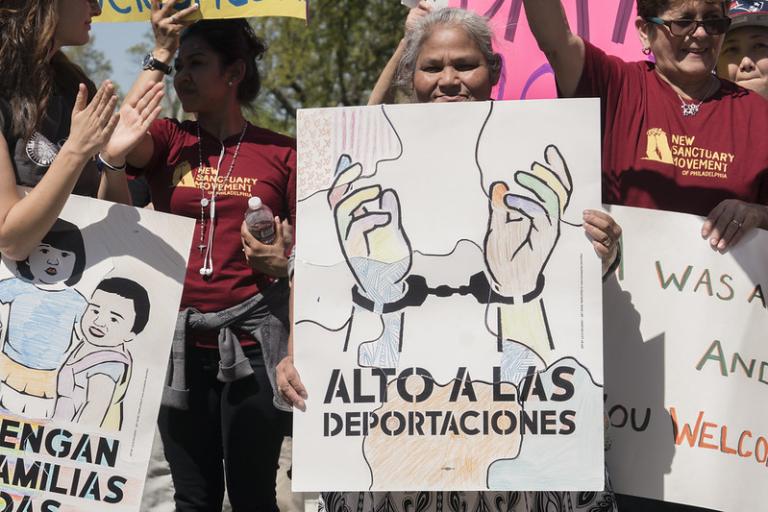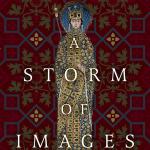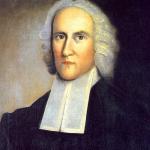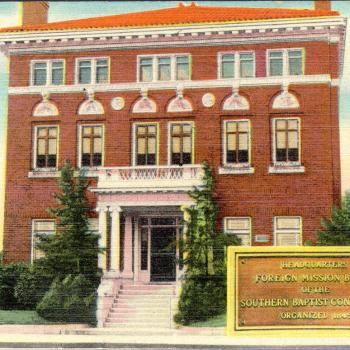
The past two weeks—the opening days of National Hispanic Heritage Month—have been marked by intense public debate about how history museums should tell the story of Latinos in the United States. As discussed last week in TIME and over the weekend in the New York Times, at issue are two exhibits: “¡Presente!,” which offers an overview of Latino history and is currently on display at the National Museum American History, and a second exhibit about Latino civil rights activism that had been in development but was put on hold by the Smithsonian and replaced by an exhibit on salsa after conservative political commentators condemned “¡Presente!” as “textbook Marxism.” These critics, in turn, called for defunding the Smithsonian’s National Museum of the American Latino altogether due to their concerns about the ideological content of the museum.
Felipe Hinojosa–a professor at Baylor University, a historian of Latino politics and religion, and one of the curators of the cancelled civil rights exhibit–told TIME that the critics wanted a “linear immigrant American story of coming to this country, finding opportunity, succeeding, assimilation,” instead of a history that explored how Latinos have participated in student protests, school integration efforts, and activism on immigration and environmental justice. “The tragedy and really the story here is around who controls the future of Latino history,” Hinojosa said.
Like Hinojosa, I am a historian who works at the intersection of political history, religion, ethnic studies, and public humanities, and like Hinojosa and other academic historians, I am deeply concerned by recent efforts to limit the truthful and nuanced histories we have a professional obligation to share with the public. (And Hinojosa and I are not alone—see, for example, the Organization of American Historians’ statement on “threats to inclusive history” and the American Historical Association’s resources on “teaching history with integrity.”) For this reason, I wanted to dedicate my post this month to a conversation with Hinojosa, not only because of the current controversies surrounding the Smithsonian exhibits, but because this month at the Anxious Bench we are exploring the themes of faith, scholarship, and the public good.
Faith, scholarship, and the public good are matters that are very much at the center of Hinojosa’s research and writing. He is the author of two books about Latino religion and politics: Latino Mennonites: Civil Rights, Faith, and Evangelical Culture (Johns Hopkins University Press, 2014) and Apostles of Change: Latino Radical Politics, Church Occupations, and the Fight to Save the Barrio (University of Texas Press, 2021). He is also a co-editor of Faith and Power: Latino Religious Politics Since 1945 (NYU Press, 2022). In his view, a full, nuanced history of Latinos in the United States must not talk only about their immigrant success stories and salsa music, but also their rich history of political engagement and social activism. And because religion is so important to Latino communities, a story about Latino experiences must also consider how faith has been a central component of political life. From the radical Young Lords in the 1970s and the Sanctuary Movement activists in the 1980s to the immigration justice organizers of the current day, Latino activists have long drawn on religious resources–beliefs, practices, communities, and institutions–to work for justice and liberation and ensure that their communities can prosper and thrive.
Ultimately, Hinojosa’s work as a historian reflects his own personal commitment to faith, scholarship, and the pursuit of the public good. Raised in Brownsville, Texas, where he was part of a Mexican American Sanctuary Movement church, he witnessed firsthand the importance of religion in Chicano life. This experienced shaped his later career as an academic. “The story of my scholarship is faith,” he explained to me, and his research, writing, and public history work reflects his commitment to tell stories about America’s past that are honest, inclusive, and rooted in service to the community.
Hinojosa and I discussed all of these issues and more in this interview, which has been edited for clarity and length.
Melissa Borja: What’s the story of your scholarship? What are the questions that are at the center of your research and what drew you to these questions?
Felipe Hinojosa: It starts at my home church in Brownsville, Texas, a south Texas border town with a predominantly Mexican American/Mexican population. I grew up and was raised in a working-class, Mexican American Protestant congregation. It was a church that was very socially engaged in the neighborhood, and, in the 1980s, it was a Sanctuary Movement church, and so there were Central American refugees that were living there in the church. All of those experiences growing up and having that kind of community where you have 150 other parents looking after you—that shaped me tremendously, and I don’t think I knew it as much as when I stepped into a graduate seminar in Chicano history and realized that faith was just not part of the discussion in those seminars. I wanted to bring that in. For me, the story of my scholarship is faith.
It’s also about inter-ethnic politics. I was in graduate school when we were talking a lot about comparative race and ethnicity. We were talking about breaking down these silos between fields and looking at horizontal relationships between African Americans, Asian Americans, Native Americans, and not just Latinos and whites. I care deeply about telling the story of Latinos and how they have struggled for freedom in the United States and how they’ve shaped American democracy. I focus on the Civil Rights Era, and so I ask: what’s the role of the Black freedom struggle and other freedom movements in the Latino story? And how have Latinos themselves contributed to the shaping of American democracy? Those are really powerful questions for me that began in church in South Texas.
MB: As you know, we’re celebrating National Hispanic Heritage Month, so this is a great opportunity for us to think about the importance of Latinx perspectives on religion in America and on American history overall. What do you think are the most important things people should know about Latinx religious life in the U.S.? And how do Latinx perspectives help us think about American religion and American democracy in a new way?
FH: First and foremost, I think people should know that Latinos take religion very seriously, especially the personal and the communal aspects of it. Latinos are much more socially conscious and politically conscious and have merged questions of faith and the public good, more so than I think they get credit for, oftentimes because these politics look so different. They’re often not external; they’re often very internal. And I think that has a lot to do with immigration politics and the fact that a lot of churches are working with undocumented communities and certainly don’t always publicize the work that they do. Look at the history of Latinos and engagement in pushing back against urban renewal movements in the 1950s and 1960s, grassroots local organizations and anti-poverty efforts in the 1970s, and then, of course, the strength of the immigrant rights movement today. All of those things are things that I’d like for people to know about Latino religious communities.
I’d also like people to think about the ways in which Latinos have fundamentally altered the structure of American faith–the kind of cultural expressions that started to show up in the 1970s. Think of mariachi mass in the Catholic Church and the kind of political engagement that a lot of Latino Protestant pastors had. It’s significant in the sense that in the 1960s and ‘70s, most folks didn’t even know who Latinos were or didn’t even understand the kinds of issues that they faced. The large population of Puerto Ricans in New York City, for example, didn’t translate into Catholic clergy that was ministering to this population, hence the growth of Pentecostalism and mainline Protestantism that became a source of refuge for a lot of these communities.
When we start to focus on Latinos and Latino religious lives and communities, we see the depth of the Civil Rights Movement, the massiveness and enormity of the movement, and the different players that it incorporated–the reformers, the radicals, the preachers, the people that were inside and outside of religion. When I think about Latino religious life and community, it’s not just the Catholic Church, it’s not the Protestant church, it’s an entire culture, an entire worldview. It’s so deeply personal, how people understand their connection to the sacred.
My book Apostles of Change talks about the occupation of churches with young Latinx radicals that would have distanced themselves greatly from the church and wanted to have nothing to do with institutional organized religion. And yet when they stepped into those sacred places, they were reciting Bible verses. They understood the ethic and the politics of Jesus. They understood and knew the Old Testament and New Testament. They were just not down with this notion of, Well, let’s just pray about it. They believed that God is a God of action, and that meant that we as human beings should take action to change our local context.
We’ve focused to a large degree on a kind of declension narrative of progressive religion and the religious left in the 1970s. It’s a complicated story, and I don’t want to get into it, but what I have found in my research is that when you focus on Latinos and certainly other marginalized populations in the 1970s, it’s not simply a shift to the right with the rise of Moral Majority, as powerful as that became.
It goes back to our story of grassroots organizing. It goes back to the barrio. It’s interesting to me to think about how some scholars might blame Black and Brown Power movements for erasing the politics of the religious left, but I think that, for the most part, we miss the kind of neighborhood politics that took off, the organizing that continued to happen in neighborhoods across the United States that, I think, challenges this narrative. I think there’s still a lot that we need to do to understand what organic intellectuals–people that were leaders in their communities–started to do. Maybe it’s not so much on the national level; maybe there wasn’t a Latino or Latina religious leader that encompassed the movement. But there were many leaders. There were thousands of leaders right on the ground that were beginning to shape how Latinos and other Americans would–in the ‘80s, ‘90s, and the contemporary period–deal with these larger questions of immigration, citizenship, democracy, and what it means to be an American, and who gets to define that and tell that story.
MB: So on the subject of being involved in change movements of various sorts, our theme this month at the Anxious Bench is faith, scholarship, the public good. I know you are doing lots of work to change public narratives about Latinx communities’ religious life. Could you offer some reflections on how your scholarship relates to the public good and how a commitment to the public good shapes your work?
FH: I think everything that excited me about writing Latino religious history had to do with not just how folks use faith and religion to start social movements or bring about resources to the community, but also how they’re negotiating with an external world, how they’re talking to other people, and how they’re bringing resources. When we focus on Latino religion, I think there’s a way in which we also have to look at how religious outsiders–people that are not necessarily clergy or religious leaders–also have a lot to say about the public good and what the role of churches and neighborhoods should be. Think about the occupation of a church. Just imagine somebody walking in, going to the front, and saying, You can either join us or you can walk away. But we’re taking over this building from here on out, and we’re turning it into the People’s Church. We’re not turning it into a secularized center. This is not going to be something that is void of faith and religion.
This is a complete transformation of the relationship that sacred spaces have with local communities. And think of the wonderful things that they were able to do–breakfast programs, used clothing drives, looking at the issue of hunger in a moment where there’s a rising consciousness about the way that farm workers are being treated in the 1960s and 1970s. Here are folks that are taking matters into their own hands and understanding completely that they are bearing the brunt of deindustrialization. They are bearing the brunt of the lack of investment in their neighborhoods, the fact that as white flight is taking center stage, resources from city budgets are now going to the suburbs to these newly formed areas, and folks are feeling abandoned. And frankly, immigrants and other people of color are being blamed for the poverty or for the crime in these areas, and we’re not looking at how these social structures are determining the quality of life of many of these folks. So we see them say, We’re not just going to go to any community center. We’re going to go to churches. We’re going to go to places of faith, and this is where we launch a movement for the public good.
I’ll say one more example of how the outside-in/inside-out relationship worked with the Puerto Rican radical group, the Young Lords in New York City. They used the church as a staging ground for the public good. In the process of that eleven-day occupation of the Spanish Methodist Church in East Harlem, there was a kind of poetic understanding, a way of putting the stories of the community together. The music that emerges from this movement, the politics of Malcolm X in the church (they had Malcolm X coming out of the speakers), and those talks of Black Power: there’s a moment in that sacred space where the Young Lords come to be who they eventually are.
Many of those Young Lords, by the way, grew up Catholic. Many of them grew up Pentecostal. Many of them saw the church as a space of orientation, a space that helped their families when they first arrived from Puerto Rico. But they had lost hope, and they had lost the sense that religious communities had anything to say to the Civil Rights Movement and to Black and Brown Power. And rather than waiting on religious leaders to do that, they took matters into their own hands. I think that speaks volumes in terms of what we need to be doing in our work as historians and scholars in our relationships to our communities, to our churches, and to folks that maybe don’t always understand the kind of work that we’re doing. Maybe we don’t always understand the kind of work that communities are doing! But it’s in that conversation and in that community that good can come out of academic work.
MB: The examples that you gave are so compelling, and I really see your work as changing so many different conversations: changing how we think about Latinx communities, changing how we think about what religion and politics looks like, changing how we think about the Civil Rights Movement and American democracy during this period. I wonder if there’s anything else you want to add that we haven’t touched on already that you think is important for us to know about you and your work as a scholar and as a public intellectual.
FH: I’m certainly not the first to say, let’s merge religious studies and ethnic studies–I think there’s been a movement to do that for a long time. I’m coming in and joining that movement and saying religion can tell us something about the American city. It can tell us something about transnational movements. It can tell us something about inter-ethnic politics. Religious networks and churches have a way of bringing Mexican Americans and rural South Texans face to face with Puerto Ricans from East Harlem and African Americans from Chicago and Saint Louis. The work is flourishing. There’s a lot of young scholars that are doing fantastic work in this area, and I hope that the conversation continues.
The other side of that question has to do with our community work and the work that we do for the public good–being able to do scholarship that can be read in Sunday school classes, that appeal to a broad audience, and that tell these really significant stories. Not all of us are made for that as scholars; we have different ways of writing. But the current political moment demands that we make interventions in questions around what it means to be an American, questions of immigration policy and the way that race continues to impact us. We need to tell the stories not yet told within the Latino community–stories of colorism, Afro-Latinx populations, indigenous communities. All of these conversations help us expand the table. Does that get more complicated? Absolutely. But it’s supposed to be hard work. Community work that is for the public good is certainly not easy, and I think it’s a challenge to all of us as we move forward.
I’m excited to do this work. I’m excited to join with people across disciplines to do it and, more than anything, to see how we can collaborate with our local communities, pastors, churches, and religious leaders to do the work for the public good.
















